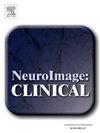神经行为治疗后功能性癫痫患者的神经可塑性改变
IF 3.6
2区 医学
Q2 NEUROIMAGING
引用次数: 0
摘要
鉴于功能性神经症状障碍的高患病率及其对个人、家庭和社会的负面影响,开发干预措施来治疗它——包括功能性癫痫(FS)亚型——是至关重要的。尽管我们对神经行为疗法(NBT)的神经生物学效应了解有限,但研究表明,NBT可减少FS的癫痫发作并改善心理合并症。在这项研究中,健康成人(N = 33)和有TBI- fs病史的患者(TBI- fs;N = 50),无FS(仅tbi;N = 50)在3 T时接受磁共振成像(MRI)检查,间隔约12周。TBI-FS参与者在两次扫描之间进行了多达12次的NBT。使用基于体素的形态测量分析结构MRI数据。体向重复测量方差分析测试了各组间灰质体积(GMV)随时间的变化。在NBT治疗后,TBI-FS参与者显示左侧下颞回和中颞回(pFWE <;0.05),癫痫发作事件减少35.78%,抑郁症减少(p <;0.001)和焦虑(p = 0.01)症状。左颞叶GMV的增加与整体心理、社会和职业功能的改善直接相关(p = 0.04, r = 0.26)。0.001)。我们观察到NBT后左颞下回的脑结构变化与TBI-FS患者的功能和心理改善相对应。这项工作强调需要进一步研究NBT的神经生物学效应,建立NBT与大脑可塑性之间的关系,并证明可能的干预目标。本文章由计算机程序翻译,如有差异,请以英文原文为准。
Neuroplastic changes in patients with functional seizures following neurobehavioral therapy
Given the high prevalence of functional neurological symptom disorder and its negative effects on the individual, family, and society, the development of interventions to treat it—including the subtype of functional seizures (FS)—is critical. Although we have limited understanding of the neurobiological effects of neurobehavioral therapy (NBT), studies indicate that NBT reduces seizures and improves psychological comorbidities in FS. In this study, healthy adults (N = 33) and patients with a history of TBI with (TBI-FS; N = 50) and without FS (TBI-only; N = 50) underwent magnetic resonance imaging (MRI) at 3 T approximately 12 weeks apart. TBI-FS participants underwent up to 12 sessions of NBT between scans. Structural MRI data were analyzed using voxel-based morphometry. A voxelwise repeated measures ANOVA tested changes in grey matter volume (GMV) between groups over time. Following treatment with NBT, TBI-FS participants showed a 1.23 % GMV increase in the left inferior and middle temporal gyri (pFWE < 0.05) along with a 35.78 % reduction in seizure events and decrease in depressive (p < 0.001) and anxiety (p = 0.01) symptoms. Left temporal GMV increases were directly associated (p = 0.04, r = 0.26) with improvements in overall psychological, social, and occupational functioning (p < 0.001). We observed structural brain changes within the left inferior temporal gyrus following NBT that correspond to functional and psychological improvements in patients with TBI-FS. This work highlights the need for further research into the neurobiological effects of NBT, building on the relationship between NBT and brain plasticity and demonstrating putative targets for interventions.
求助全文
通过发布文献求助,成功后即可免费获取论文全文。
去求助
来源期刊

Neuroimage-Clinical
NEUROIMAGING-
CiteScore
7.50
自引率
4.80%
发文量
368
审稿时长
52 days
期刊介绍:
NeuroImage: Clinical, a journal of diseases, disorders and syndromes involving the Nervous System, provides a vehicle for communicating important advances in the study of abnormal structure-function relationships of the human nervous system based on imaging.
The focus of NeuroImage: Clinical is on defining changes to the brain associated with primary neurologic and psychiatric diseases and disorders of the nervous system as well as behavioral syndromes and developmental conditions. The main criterion for judging papers is the extent of scientific advancement in the understanding of the pathophysiologic mechanisms of diseases and disorders, in identification of functional models that link clinical signs and symptoms with brain function and in the creation of image based tools applicable to a broad range of clinical needs including diagnosis, monitoring and tracking of illness, predicting therapeutic response and development of new treatments. Papers dealing with structure and function in animal models will also be considered if they reveal mechanisms that can be readily translated to human conditions.
 求助内容:
求助内容: 应助结果提醒方式:
应助结果提醒方式:


